- About
- Programs
- Issues
- Academic Freedom
- Political Attacks on Higher Education
- Resources on Collective Bargaining
- Shared Governance
- Campus Protests
- Faculty Compensation
- Racial Justice
- Diversity in Higher Ed
- Financial Crisis
- Privatization and OPMs
- Contingent Faculty Positions
- Tenure
- Workplace Issues
- Gender and Sexuality in Higher Ed
- Targeted Harassment
- Intellectual Property & Copyright
- Civility
- The Family and Medical Leave Act
- Pregnancy in the Academy
- Publications
- Data
- News
- Membership
- Chapters
Data Snapshot: Tenure and Contingency in US Higher Education
Federal figures on faculty appointments and graduate student employment in US higher education
This report summarizes National Center for Education Statistics (NCES) data on patterns of faculty appointments and graduate student employment in US higher education from fall 1987 through fall 2021, focusing on the prevalence of tenure, contingency, and part-time employment. The primary data source is the Integrated Postsecondary Education Data System (IPEDS) database, with comparable estimates included from the National Study of Postsecondary Faculty (NSOPF) for selected years prior to 2002. This report also describes additional resources for exploring data on faculty employment in US higher education.
Faculty Appointment Types
Long-standing AAUP policies recognize three types of full-time faculty appointments: (a) tenured (with continuous tenure), (b) tenure-track (on probation), and (c) non-tenure-track (special appointments), which should be limited to visitors or temporary replacements. However, US colleges and universities have relied increasingly on faculty members holding contingent appointments that are ineligible for tenure, including contract-renewable (usually full-time non-tenure-track) and adjunct (usually part-time fixed-term or temporary) appointments. In response, the Association recommended in its 2010 report Teaching and Teaching-Intensive Appointments that institutions convert full-time non-tenure-track appointments to tenure-track appointments, discontinue hiring off the tenure track (with the exception of special appointments), and create tenure-eligible positions for part-time faculty members who wish to remain in the profession on a part-time basis over the long term.
To document the increased reliance on contingent faculty members, this report summarizes IPEDS and NSOPF data on nonmedical faculty appointments—reported to IPEDS as “instructional staff”—disaggregated by appointment type. Full-time contingent appointments are further disaggregated into two categories—non-tenure-track and no tenure system—to distinguish faculty hired off the tenure track from those working in institutions that do not have a tenure system at all; this approach is consistent with prior NSOPF reporting standards and helps us understand why the appointments are ineligible for tenure. All part-time faculty appointments are reported in one category, although each year a negligible number (less than 1 percent) of part-time appointments are tenured or tenure-track.
Graduate student employees often have independent teaching responsibilities and may be termed “contingent faculty” to the extent that they function as faculty members. Because many institutions lack the capacity to report reliably to IPEDS the number of graduate student employees who have such teaching responsibilities, this report summarizes the data on graduate student employees—reported to IPEDS as “graduate assistants”—separately from faculty, and includes those with research, administrative, and classroom assistant duties as well as those with independent teaching assignments.
Summary of Findings
US colleges and universities have increasingly relied on faculty members holding contingent appointments over the past several decades. The latest federal figures are summarized below:
-
The US academic workforce has shifted from mostly full-time tenured or tenure-track faculty to mostly contingent faculty, including full-time non-tenure-track, full-time with no tenure system, and part-time faculty (see figure 1).
- Over two-thirds (68 percent) of faculty members in US colleges and universities held contingent appointments in fall 2021, compared with about 47 percent in fall 1987.
- Nearly half (48 percent) of faculty members in US colleges and universities were employed part time in fall 2021, compared with about 33 percent in 1987.
- About 24 percent of faculty members in US colleges and universities held full-time tenured appointments in fall 2021, compared with about 39 percent in fall 1987.
- Most faculty members in US colleges and universities held contingent appointments across all institution types in fall 2021 (see figure 2).
- Women and underrepresented minority (URM) faculty members held part-time appointments in greater proportions than men and non-URM faculty members in fall 2021 (see figure 3).
- Among full-time faculty members, women and URM faculty members held contingent appointments in greater proportions than men and non-URM faculty members in fall 2021 (see figure 4).
- The number of graduate student employees increased 44 percent from fall 2002 to fall 2021, compared with a 19 percent increase among both full-time and part-time faculty (see figure 5).
Conclusion and Additional Resources
This report documents the shift in US academic employment from mostly full-time tenured or tenure-track appointments to mostly contingent appointments, as well as disparities that remain for women faculty and faculty of color. Tenure is the primary means of protecting academic freedom and exists not only to protect individual faculty members but also to benefit students and serve the common good by ensuring the quality of teaching and research in higher education. Overreliance on contingent appointments, which lack the protection of tenure for academic freedom and the economic security of continuing appointments, threatens the success of institutions in fulfilling their obligations to students and to society.
Updated findings will be posted on the AAUP’s interactive data website, at https://data.aaup.org, as NCES releases new or revised IPEDS datasets. The website includes institution-level data and provides tools for disaggregating summary data by additional variables such as region, state, institution size, Carnegie Classification, and so on. The website also provides tools for exploring faculty compensation data from both the AAUP and IPEDS.
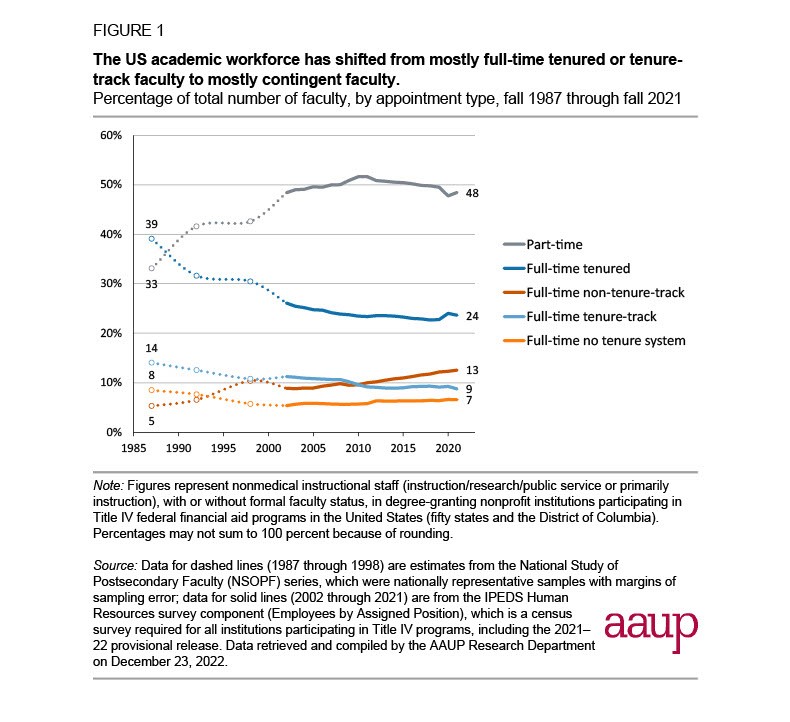
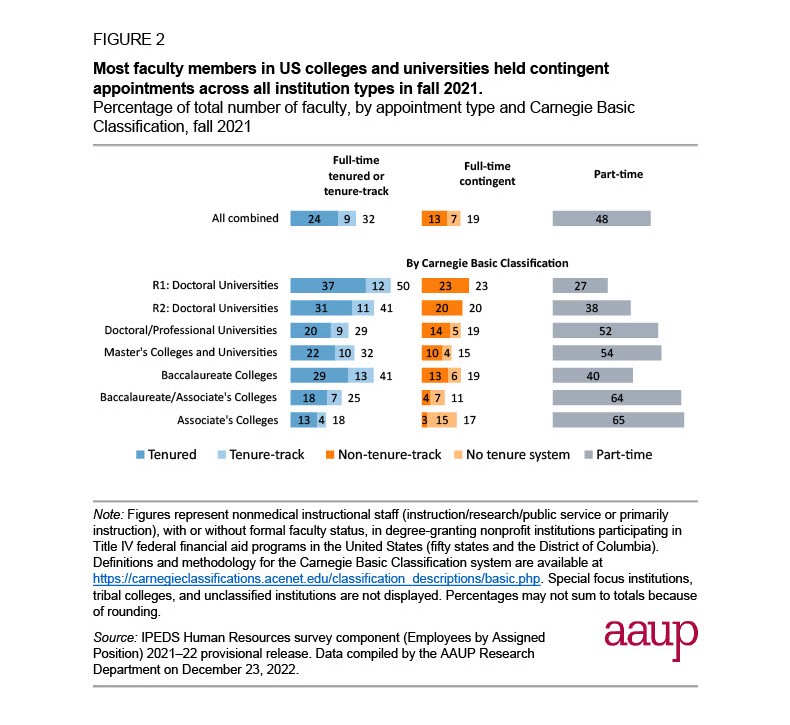
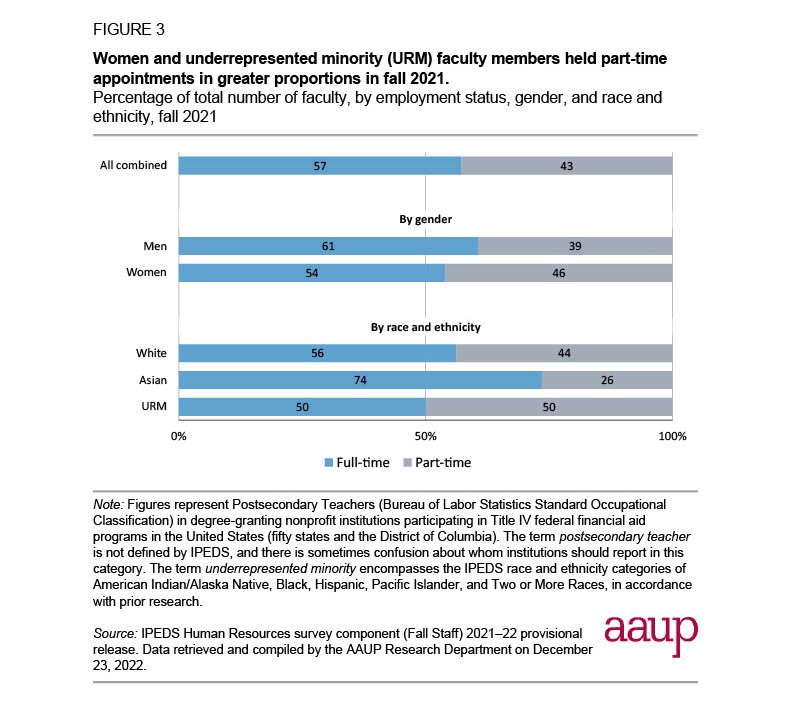
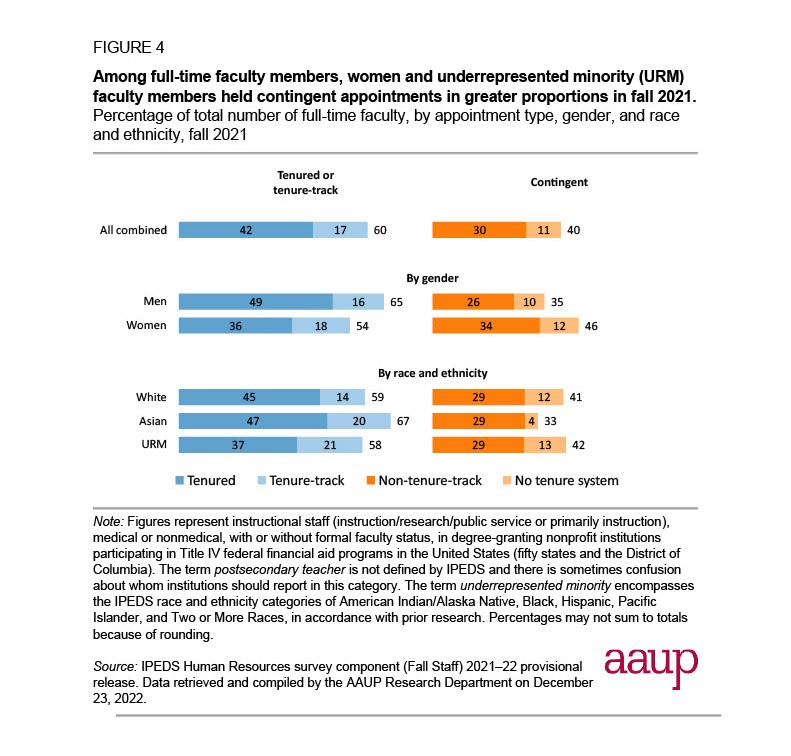
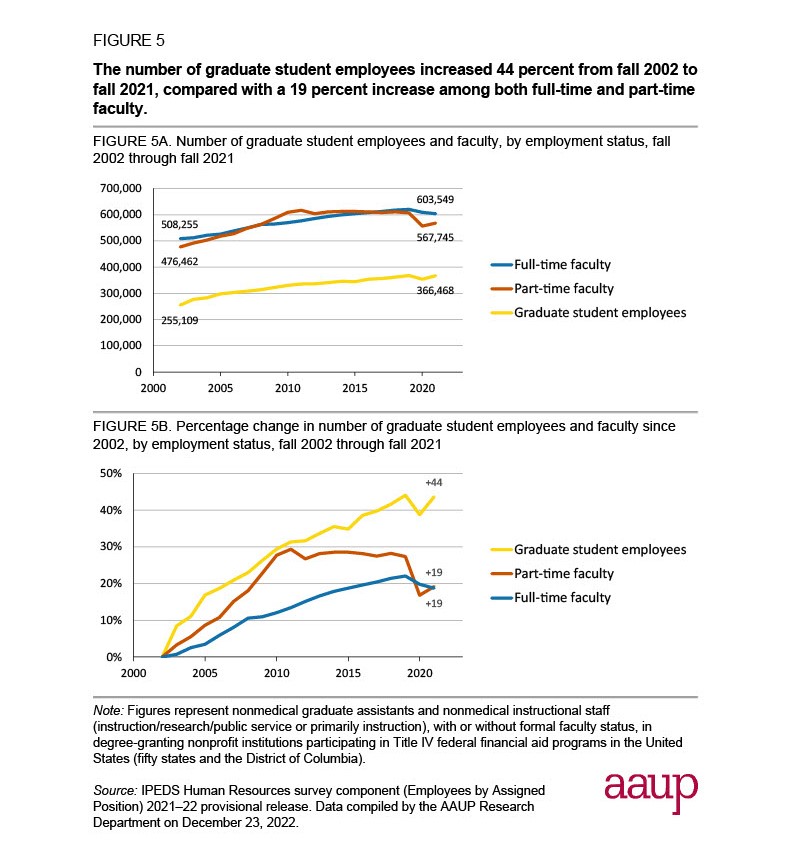
Glenn Colby is senior researcher at the AAUP.



